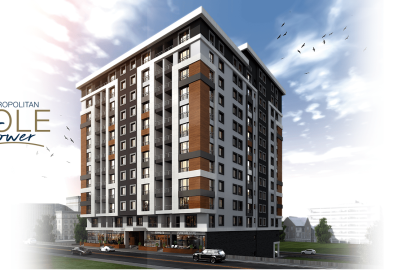The Ethiopian real estate market in June 2024 saw significant developments influenced by economic, social, and regulatory factors. The sector is experiencing a transition, with notable trends in property demand and supply dynamics driven by urbanization, demographic changes, and evolving consumer preferences.
Key Trends
- High Demand in Addis Ababa : Addis Ababa remains the focal point of real estate activity, accounting for nearly 48.4% of total searches for houses across Ethiopia. The highest demand was observed in Bole (35.5%), followed by Ayat and Nifas Silk-Lafto.
- Mixed-Use Developments : There is a growing trend towards mixed-use developments combining residential, commercial, and recreational spaces. This shift addresses the increasing need for convenience and integrated living environments.
- Affordable Housing : The demand for affordable housing continues to rise, driven by the urban middle class and lower-income groups. This segment is crucial for addressing the housing deficit in urban areas.
- Sustainability and Green Building : There is a heightened focus on sustainable and eco-friendly construction practices. Developers are incorporating green building standards to meet the growing consumer demand for environmentally conscious living spaces.

Regional Insights
- Addis Ababa : Dominates the market with the highest property searches, especially in Bole, Ayat, and Nifas Silk-Lafto. The city's prime zones are witnessing increased interest due to better infrastructure and amenities.
- Other Regions : Amhara and Afar regions follow in demand, with Amhara making up 19.6% of the total property searches.
Challenges
- Regulatory Complexities : The real estate sector faces regulatory hurdles that can slow down development projects. Navigating these complexities requires strategic planning and collaboration with government bodies.
- Infrastructure Deficits : Despite improvements, infrastructure deficits, particularly in transportation and utilities, pose challenges to the seamless development of real estate projects.
- Financing Constraints : Access to financing remains a significant barrier, especially for small and medium-sized developers. Innovative financing models and partnerships are essential to overcome these constraints.
Opportunities
- Government Incentives : The Ethiopian government is offering incentives to boost real estate development, including tax breaks and streamlined approval processes for large-scale projects.
- Strategic Partnerships : Forming strategic partnerships with local and international stakeholders can unlock new opportunities and drive sustainable growth in the real estate sector.
- Technological Advancements : Leveraging technology for property management, marketing, and sales can enhance efficiency and reach a broader audience, tapping into the digital-savvy consumer base.
Conclusion
The Ethiopian real estate market is in a transformative phase, marked by significant demand in urban areas like Addis Ababa. Stakeholders must navigate regulatory challenges and infrastructure deficits while capitalizing on emerging trends and government incentives. Strategic planning and innovative approaches will be key to thriving in this evolving landscape.
Related posts:
Real Estate Trends and Market Statistics for Addis Ababa
Brochure for Amibara Ertale and Dallol Properties

